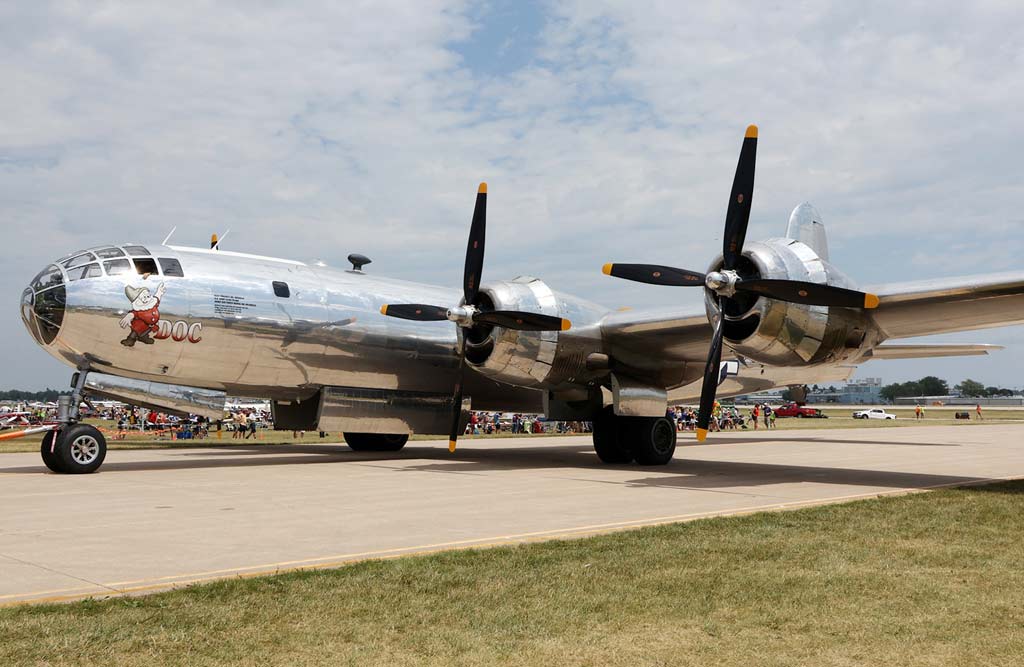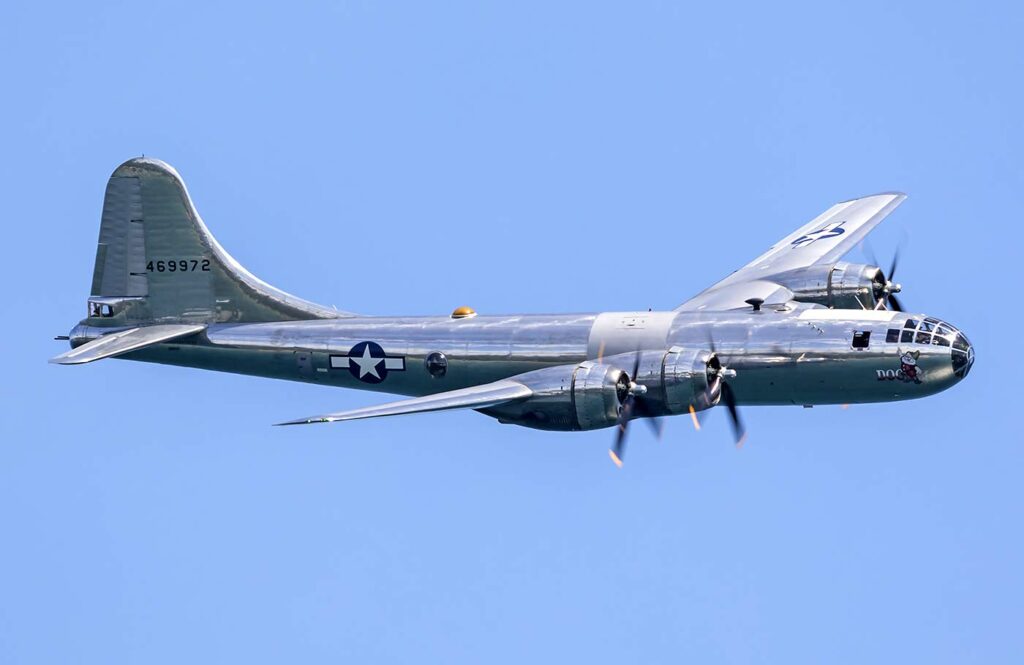The Boeing B-29 Superfortress, a WWII-era American heavy bomber, distinguished by its pressurized cabin, remote-controlled guns, and long range.
The Boeing B-29 Superfortress was one of the most technologically advanced bombers of World War II. Renowned for its long range and significant payload capacity, the B-29 played a crucial role in the latter stages of the war, particularly in the Pacific Theater. This article aims to explore the development, design, operational capabilities, and combat history of the B-29 Superfortress.

History of the Development of the Boeing B-29 Superfortress
In the late 1930s and early 1940s, as global conflict intensified, the United States sought to develop a long-range bomber that could reach targets across vast distances. The B-29 program was initiated by Boeing, led by chief engineer Edmund T. “Eddie” Allen. The primary goal was to create a bomber capable of delivering heavy payloads over long distances, with advanced features like a pressurized cabin and remote-controlled gun turrets.
The first prototype of the B-29 flew on September 21, 1942. The development of the B-29 was driven by the strategic need for an aircraft that could operate at high altitudes and over great distances, crucial for the planned bombing campaign against Japan.
Its development marked a significant advancement in bomber technology and strategic aerial warfare capabilities.
Design of the Boeing B-29 Superfortress
The B-29 Superfortress featured several innovative design elements. It was one of the first bombers with a fully pressurized cabin, allowing it to operate at high altitudes. The aircraft was powered by four Wright R-3350 Duplex-Cyclone radial engines, each providing significant horsepower.
The B-29 had a length of 30.2 meters and a wingspan of 43.1 meters. Its design included a revolutionary remote-controlled gun system, providing defensive firepower without the need for gunners in exposed positions.
The aircraft’s design, however, faced challenges, including engine reliability issues and the complexity of its advanced systems. Despite these challenges, the B-29’s design represented a leap forward in bomber technology.
Performance of the Boeing B-29 Superfortress
In performance terms, the B-29 Superfortress excelled. It could reach a top speed of about 575 km/h (357 mph) and had a service ceiling of 9,800 meters (32,000 feet). Its range of approximately 5,200 kilometers (3,250 miles) enabled it to conduct long-range strategic bombing missions.
Compared to contemporaries like the British Avro Lancaster or the American B-17 Flying Fortress, the B-29 offered superior range, altitude, and payload capacity. Its ability to conduct high-altitude, long-range bombing missions was unmatched.

Military Use and Combat of the Boeing B-29 Superfortress
The B-29 was heavily armed with machine guns and could carry a significant bomb load, including the atomic bombs dropped on Hiroshima and Nagasaki. It was primarily used in the Pacific Theater, conducting strategic bombing raids over Japan, which played a crucial role in ending the war.
The B-29’s combat effectiveness was demonstrated in operations such as the firebombing of Tokyo and the atomic bombings. It faced limited competition due to its high-altitude capabilities but was challenged by Japanese fighter aircraft and anti-aircraft defenses.
Post-war, the B-29 continued to serve in various roles and was used by several countries. It was eventually replaced by more advanced jet-powered bombers like the B-47 Stratojet and the B-52 Stratofortress.
The Boeing B-29 Superfortress stands as a significant achievement in aviation history. Its development, innovative design, and operational success played a pivotal role in the Allied victory in the Pacific and marked a new era in strategic bombing. The legacy of the B-29 is not only in its wartime achievements but also in its influence on the design and development of future generations of bomber aircraft.
Back to the Bombers section.